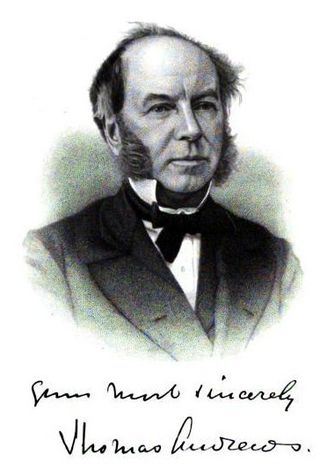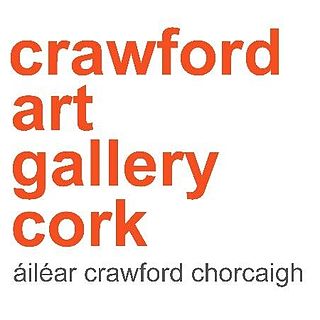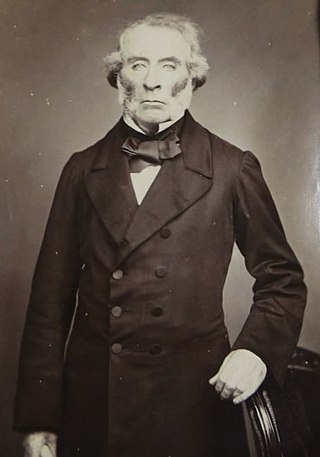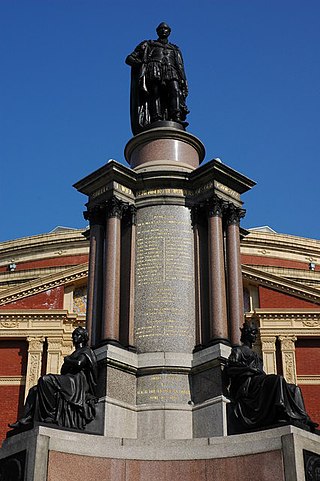Related Research Articles

Cork Institute of Technology was an institute of technology, located in Cork, Ireland. Upon its dissolution, the institute had 17,000 students studying in art, business, engineering, music, drama and science disciplines. The institute had been named as Institute of Technology of the Year in The Sunday Times University Guide for Ireland on numerous occasions. On 1 January 2021, the institute merged with the Institute of Technology, Tralee to become the Munster Technological University, Ireland's second technological university.

Thomas Andrews FRS FRSE was an Irish chemist and physicist who did important work on phase transitions between gases and liquids. He was a longtime professor of chemistry at Queen's University of Belfast.

St Patrick's Pontifical University, Maynooth, is the "National Seminary for Ireland", and a pontifical university, located in the town of Maynooth, 24 km (15 mi) from Dublin, Ireland.

John Henry Foley, often referred to as J. H. Foley, was an Irish sculptor, working in London. he is best known for his statues of Daniel O'Connell in Dublin, and of Prince Albert for the Albert Memorial in London.

Queen Square is a garden square in the Bloomsbury district of central London. Many of its buildings are associated with medicine, particularly neurology.

The National Museum of Ireland – Natural History, sometimes called the Dead Zoo, a branch of the National Museum of Ireland, is housed on Merrion Street in Dublin, Ireland. The museum was built in 1856 for parts of the collection of the Royal Dublin Society and the building and collection were later passed to the State.

The Crawford Art Gallery is a public art gallery and museum in the city of Cork, Ireland. Known informally as the Crawford, it was designated a 'National Cultural Institution' in 2006. It is "dedicated to the visual arts, both historic and contemporary", and welcomed 265,438 visitors in 2019. The gallery is named after William Horatio Crawford.
Sir Thomas Newenham Deane was an Irish architect, the son of Sir Thomas Deane and Eliza Newenham, and the father of Sir Thomas Manly Deane. His father and son were also architects.

Richard Quain was an English anatomist and surgeon, born at Fermoy, Ireland, a brother of Jones Quain. He studied medicine in London and in Paris. He was appointed demonstrator in 1828 and professor of anatomy in 1832 at the University of London, resigning in 1850, and assistant surgeon in 1834 and surgeon in 1848 to the North London Hospital, from which he resigned in 1866. He was president of the Royal College of Surgeons in 1868.

William Theed, also known as William Theed, the younger was a British sculptor, the son of the sculptor and painter William Theed the elder (1764–1817). Although versatile and eclectic in his works, he specialised in portraiture, and his services were extensively used by the Royal Family.

The Bath Royal Literary and Scientific Institution is an educational charity based in Bath, England. It was founded in 1824 and provides a museum, an independent library, exhibition space, meeting rooms and a programme of public lectures, discussion groups and exhibitions related to science, the arts and current affairs.

Robert Ball was an Irish naturalist. He served as the Director of the Dublin University Museum, and developed a method of dredging known as "Ball's dredge." He served as a secretary to the Royal Zoological Society of Ireland for two decades and was responsible for popularizing natural history through public educational outreach.

James Apjohn was the Irish chemist known for the discovery of new minerals.

Joseph Durham was an English sculptor.
Angela Conner FRSS is an English sculptor who works in London. Conner has exhibited internationally and has large scale sculptures in public and private collections around the world.

Edward Daniel Leahy was an Irish portrait and subject painter. He was trained in Dublin, where he began his career before establishing himself in London.
William Kirby Sullivan was an Irish philologist, chemist, historian, Irish nationalist, educationalist and a passionate promoter of Irish industrial development. He was most notable for his scholarship promoting the literary history and culture of Ireland. He was widely referenced by researchers such as scientist William Grove, jurist and historian Henry Maine and ethnographer and historian Jeremiah Curtin, who visited him in his Irish sojourn of 1887.
William Horatio Crawford (1815–1888) was an Irish brewer and philanthropist. He was both a book collector and art collector, and contributed to the art school at the Cork School of Design, which became known as the Crawford School of Art in 1885. Much of the Crawford art collection is now held in the Crawford Art Gallery in Cork city.

Cork Savings Bank is a nineteenth century neoclassical building on Lapp's Quay in Cork city, Ireland. A purpose-built bank, it was completed in 1842 and is currently in use by University College Cork as their so-called "Centre for Executive Education".
References
- ↑ Black Adam and Charles, ltd (1885). Black's tourist guide to Ireland. Oxford University. p. 134.
- McCarthy, Kieran (2003). Discover Cork. O'Brien Pres Limited. ISBN 0-86278-817-X.
- Cadogan, Tim; Jeremiah Falvey (2006). A Biographical Dictionart of Cork . Four Courts Press. ISBN 1-84682-030-8.